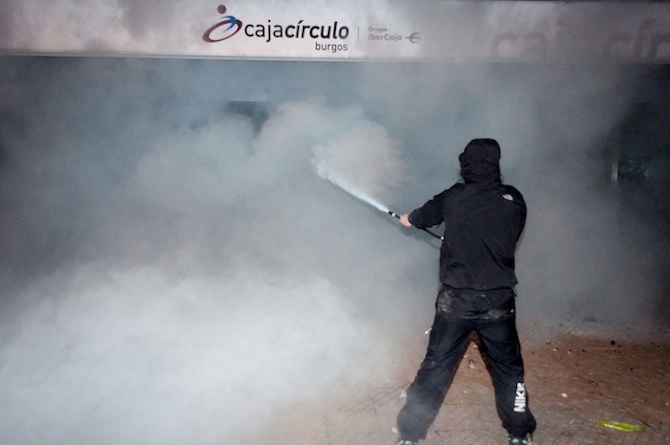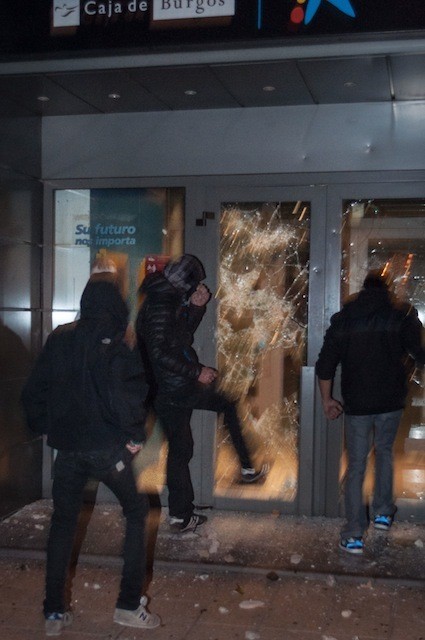Photos by Guillermo Rivas Pacheco and Daniel Rivas PachecoUntil four days ago, the town of Burgos in northern Spain was best known for a kind of blood sausage made with rice.But on Friday it made the headlines for something even less palatable—a protest by a neighborhood association against the building of a new avenue through the heart of Gamonal (one of its most traditionally working class districts) that descended into violence. Roadworks were dug up and used as projectiles, bank windows were smashed in, and heated battles were fought between the tracksuit-clad protesters and riot police drafted in from nearby Valladolid.
Advertisement
The first day of rioting resulted in 19 arrests and a handful of stories in the press. What no one expected was that the riots would continue for the next three days, turning the center of the city into a no-go zone and prompting journalists who should really know better to throw the words "Homs" and "Aleppo" around like hyperbolic grenades.As the protests have continued the tone of the reports has changed. The first dispatches focused on cataloging the arrests and acts of vandalism, but as the protests have gone on the media’s initial incredulity at the possibility that people anywhere could get so pissed off over a road is gradually being replaced by an understanding that that’s exactly what's happening. And the playing out of local concerns on a national stage is not something to be sniffed at.

In the neighborhood itself, support for the protesters from locals revolves more around this bigger picture. While everyone condemns the violence, their statements are quickly followed up with a, "But maybe now they’ll listen to us." Raul Salinero, councilor for the center left Izquierda Unida coalition, told El Pais that the protests are "the result of desperation. We’ve been trying for months to talk to the mayor about this, with no results.""This" is the investment by the local conservative government of $11 million into a non-essential beautification project. The work is to be completed by a building company owned by a man locals call the cacique (a term for a businessman who runs everything in the area), Antonio Mendez Pozo, who also happens to be the president of the city’s Chamber of Commerce and the owner of the local paper, El Diario de Burgos. With such a lucrative contract randomly falling into Pozo's hands, it's easy to understand why people in the area are so upset.
Advertisement
Although the sustained and coordinated violence in Burgos is virtually unprecedented in Spain, Gamonal itself is by no means unique. It's a working class neighborhood in a provincial city, where residents feel ignored and unrepresented by the political class, so they want to make their voices heard any way they can. And now, thanks to the protests, it’s not just the local government listening, but the whole country.On Monday, the government announced that they’d be sending a unit of 100 extra riot police into the city to restore order to the neighborhood and to prevent "contagion." While, in this case, they’re referring to other parts of the city, something tells me that the government is more concerned about the wider picture—the eruption of similar rioting in any of the countless towns and cities just like Burgos. And so they should be.Additional reporting by Guillermo Rivas PachecoFollow Paul on Twitter: @pauldotsimon
